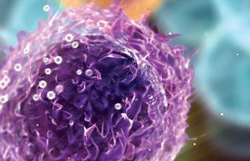Highlights
- •Development of a holistic transcriptomic-based TME classification platform
- •Detection of four immune/fibrotic TME subtypes conserved in a broad array of cancers
- •The four TME subtypes are predictive of response to immunotherapy in multiple cancers
- •Integration of genomics and transcriptomics into a visual tool with a planetary view
Summary
The clinical use of molecular targeted therapy is rapidly evolving but has primarily focused on genomic alterations. Transcriptomic analysis offers an opportunity to dissect the complexity of tumors, including the tumor microenvironment (TME), a crucial mediator of cancer progression and therapeutic outcome. TME classification by transcriptomic analysis of >10,000 cancer patients identifies four distinct TME subtypes conserved across 20 different cancers. The TME subtypes correlate with patient response to immunotherapy in multiple cancers, with patients possessing immune-favorable TME subtypes benefiting the most from immunotherapy. Thus, the TME subtypes act as a generalized immunotherapy biomarker across many cancer types due to the inclusion of malignant and microenvironment components. A visual tool integrating transcriptomic and genomic data provides a global tumor portrait, describing the tumor framework, mutational load, immune composition, anti-tumor immunity, and immunosuppressive escape mechanisms. Integrative analyses plus visualization may aid in biomarker discovery and the personalization of therapeutic regimens.
Introduction
Precision medicine has the potential to revolutionize cancer care as accumulating evidence suggests that patients who receive personalized therapy have better clinical outcomes (Schwaederle et al., 2016). The genomic characterization of tumors has become more common in both clinical trials and in standard care. Despite the growing acceptance of genomic analysis as a part of clinical decision making, genomic characterization often largely entails the utilization of targeted panels comprising only a limited number of genes that capture a fraction of oncogenic alterations (Suwinski et al., 2019; Castellanos et al., 2017; McCabe et al., 2019). Transcriptomic analysis offers an additional opportunity to dissect the complexity and heterogeneity of tumors and to discover new biomarkers that can be used to develop novel therapeutic strategies (Cieślik and Chinnaiyan, 2018). Whole-exome sequencing (WES) and RNA sequencing (RNA-seq) accompanied by conventional pathological, immunohistochemical, and clinical tests offer a multifaceted view of tumor characteristics and can potentially lead to the further identification and optimization of individual cancer patient therapy (El-Deiry et al., 2019; Koeppel et al., 2018; Malone et al., 2020). Nevertheless, large-scale exome and transcriptome sequencing provide thousands of parameters, which is often overwhelming and unsustainable for routine treatment decision support (Koeppel et al., 2018; Schwarze et al., 2020; Singer et al., 2019; Wadapurkar and Vyas, 2018).The tumor microenvironment (TME) plays a significant role in clinical outcomes and response to therapy. By exerting pro- and anti-tumorigenic actions, tumor-infiltrating immune cells can profoundly influence tumor progression and the success of anti-cancer therapies (Fridman et al., 2012; Chen and Mellman, 2017). Cancer-associated fibroblasts (CAFs) as well as angiogenic signals from stromal cells have been shown to affect outcomes (Liu et al., 2019b; Pommier and Fearon, 2016; Schaaf et al., 2018; Tao et al., 2017). Deciphering the tumor-immune microenvironment profile of a cancer can improve the tailoring of targeted and immunotherapeutic strategies. However, to date, comprehensive and integrated genomic and transcriptomic analyses that assess the tumor and the TME as a whole remain rare, are often unstructured, and lack efficient and useful models. Here, we developed an accessible transcriptomic analysis platform for TME classification to identify functional gene sets defined by cellular populations, signaling signatures, TME processes, and cancer cell properties that ensure comprehensive characterization of both the tumor and its TME. Finally, transcriptomic and genomic data integration were visualized, showing a planetary view of the tumor through a comprehensive tumor portrait.
Results
Establishment of TME gene expression signatures
To classify TMEs using a transcriptomic-based analytical platform, knowledge-based functional gene expression signatures (Fges) representing the major functional components and immune, stromal, and other cellular populations of the tumor were selected using published literature (STAR Methods, Figure 1A, Table S1), ultimately creating a holistic approach thoroughly describing the TME within one single model. T cell activity and antigen-presentation Fges were chosen according to the principles of the cancer immunogram (Blank et al., 2016) and cancer immunity cycle (Chen and Mellman, 2013). Fges that characterize the stromal compartments (e.g., angiogenesis, CAFs), immune suppression via macrophages and myeloid-derived suppressor cells, and Fges related to cancer cell properties (Sanchez-Vega et al., 2018) were included. Ultimately, a manually curated list of 29 Fges was created covering known cellular and functional TME properties (STAR Methods, Table S1; Figures 1A and 1B). Each Fges was refined to include only genes associated with a specific cell type or biological process (Table S2, Figures 1C, S1A, and S1B)….







